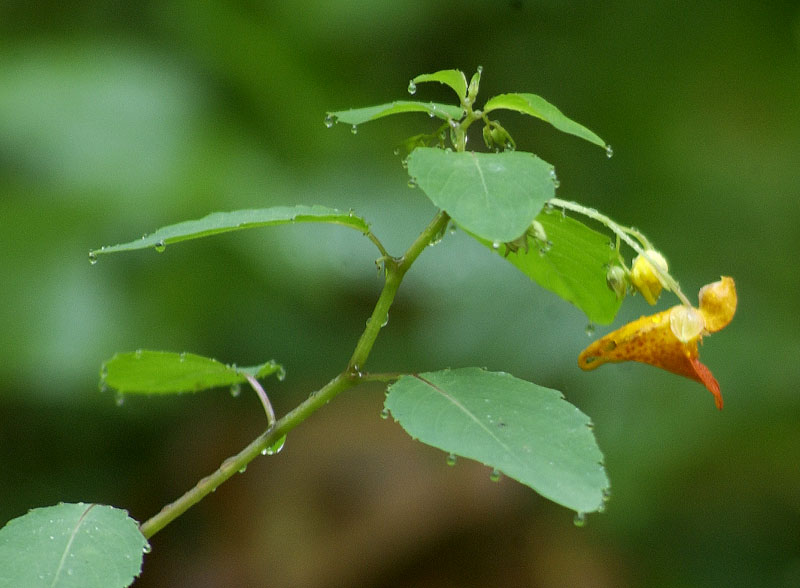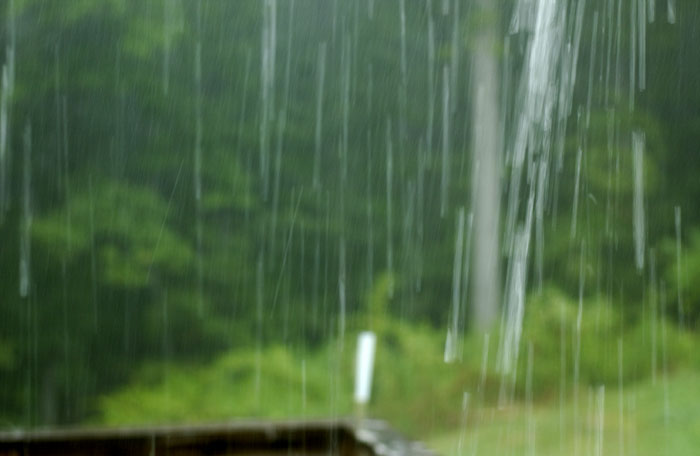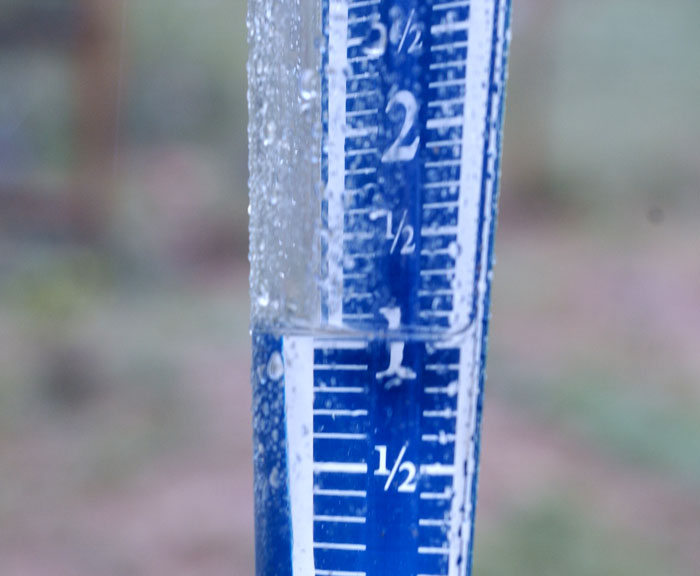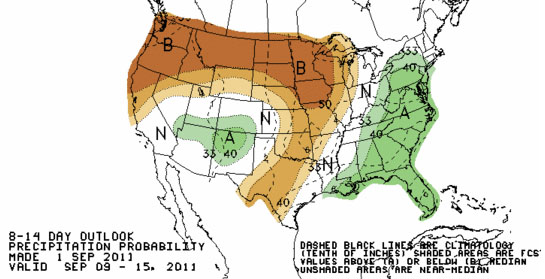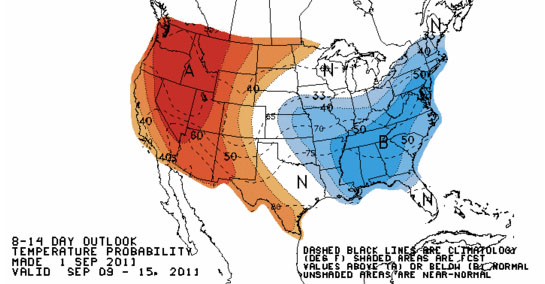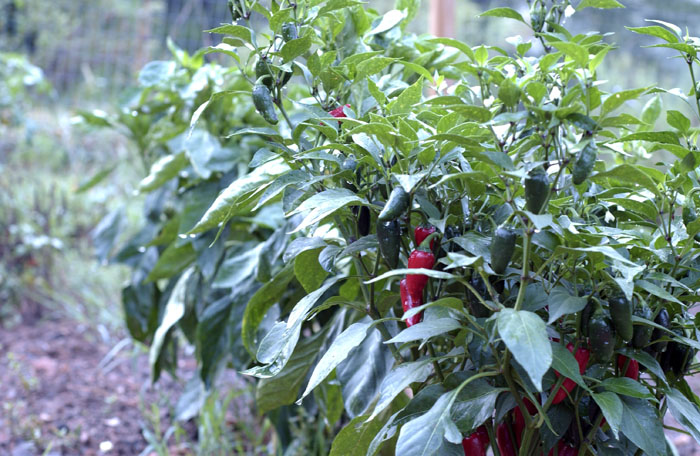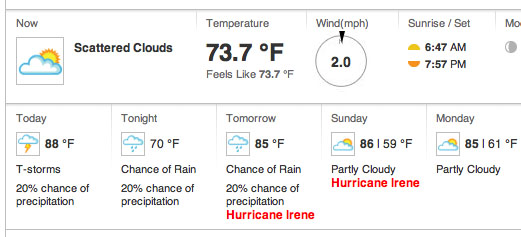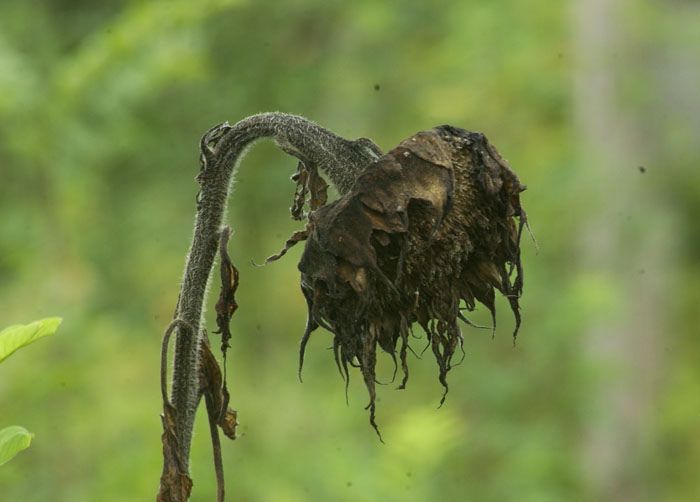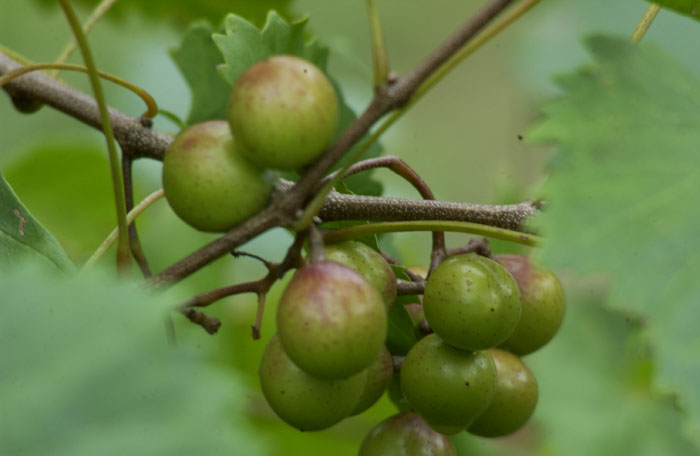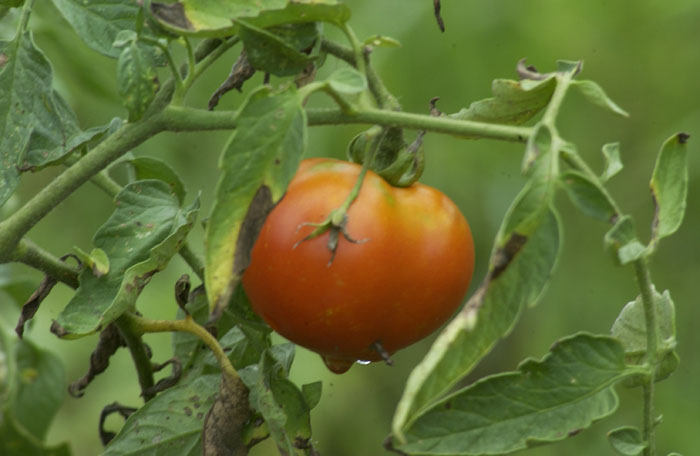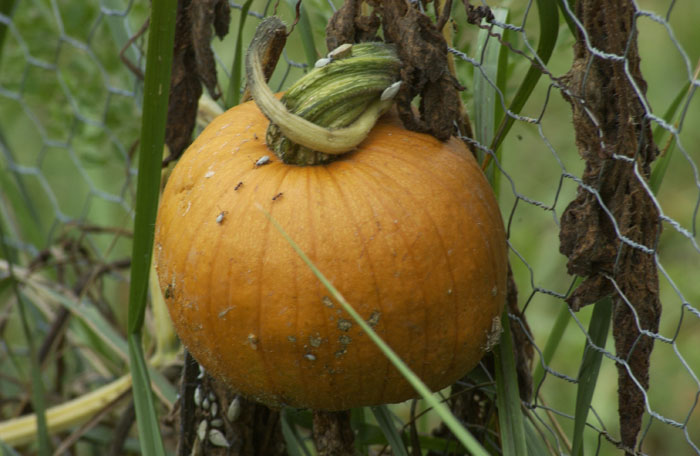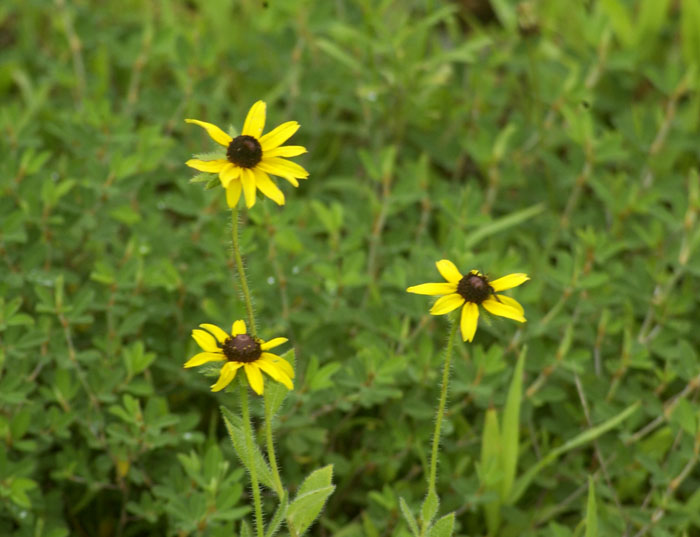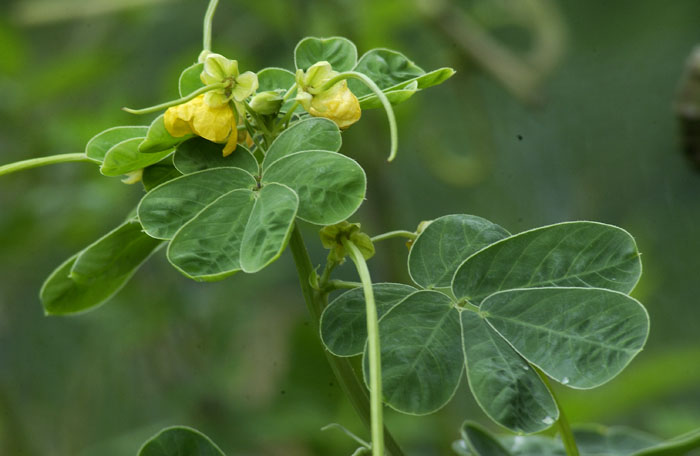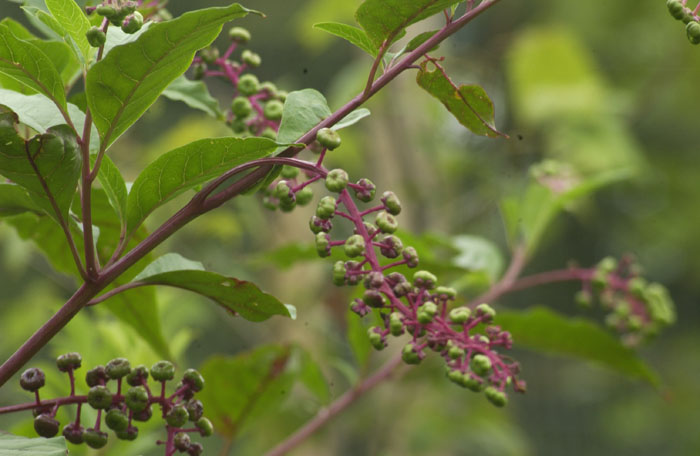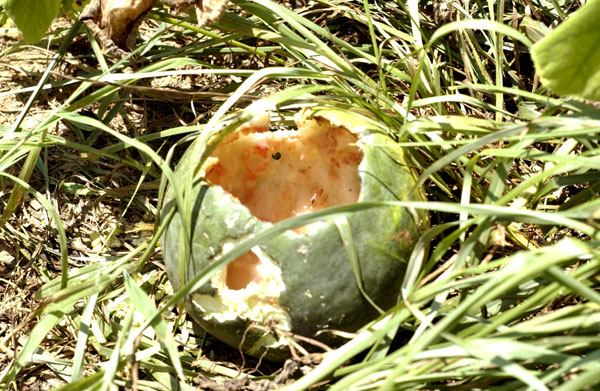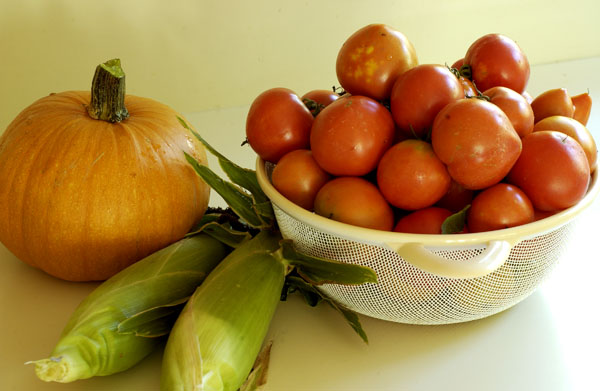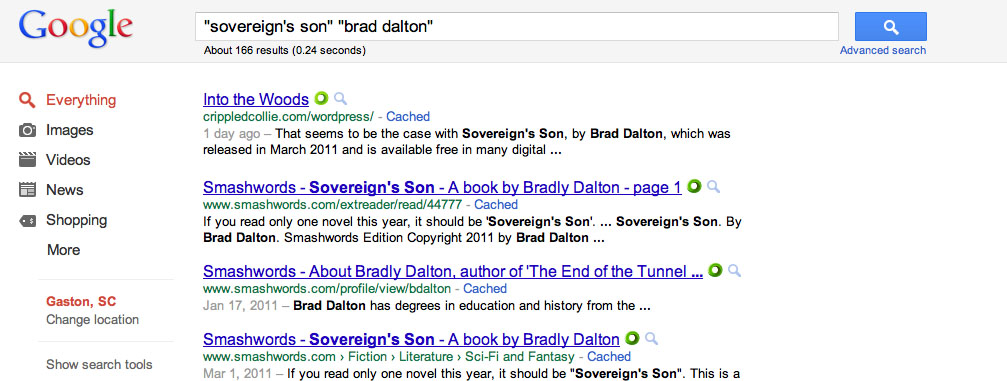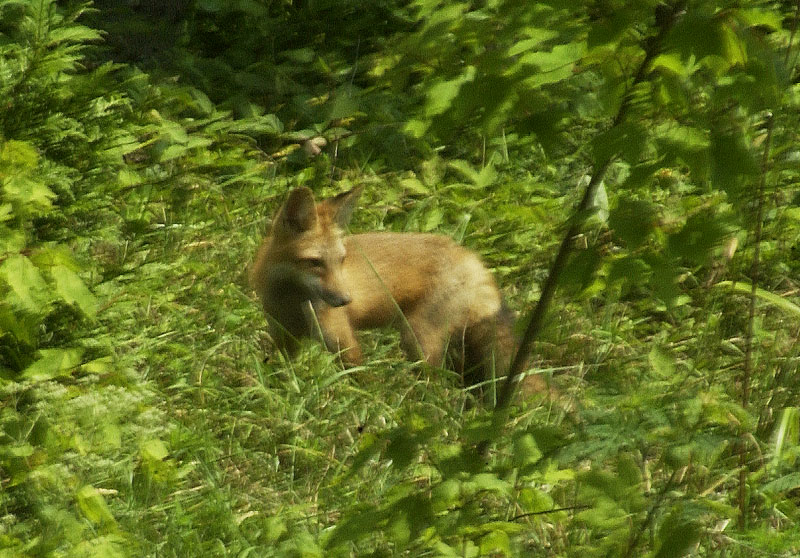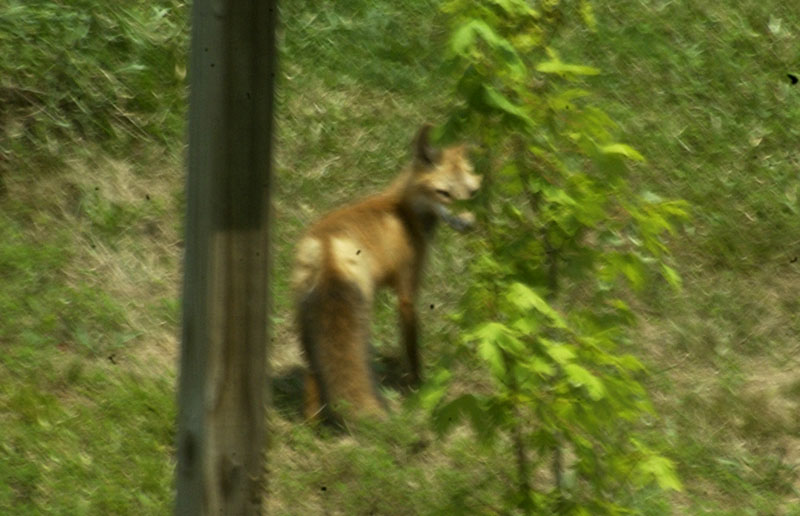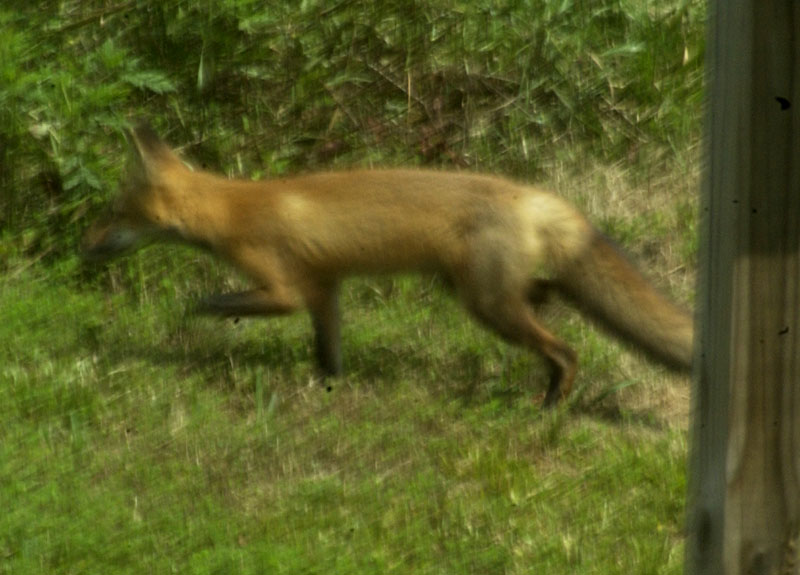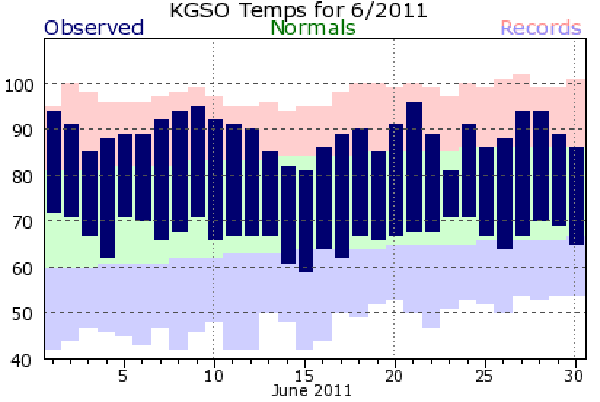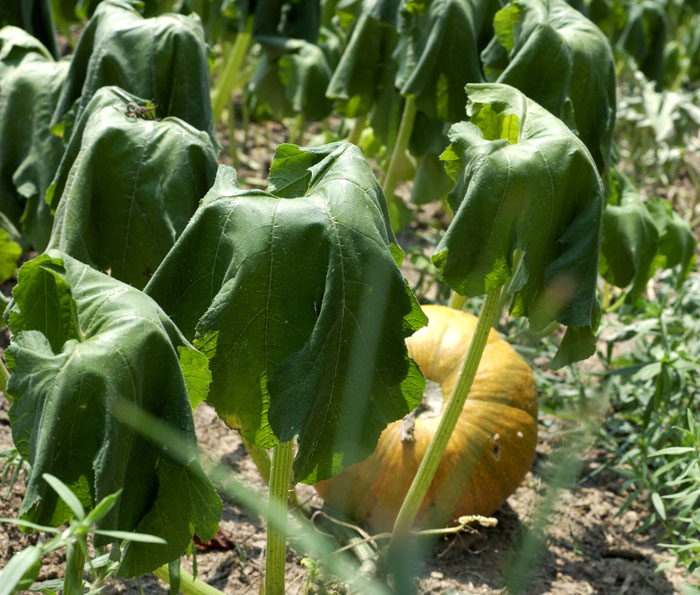
Pumpkin vines in 99-degree heat
I haven’t posted lately because I’ve constantly been in a foul and angry mood. I’m afraid my mood is not going to get any better until it rains and the weather turns cooler. And of course it’s not just me made miserable by the weather. This heat wave is affecting something like two-thirds of the country. Thousands and thousands of acres of crops and growing things are being scorched.
Every summer has been like this since I moved here from California in 2008. I’ve been going over the nearest local data from the National Weather Service. In June, July and August, daily high temperatures have been substantially above normal almost 75 percent of the time. I don’t even know how normal is defined anymore, since we’re almost always above normal. Scorching summers are the new normal. That’s clear.
With a practical, data-hungry and reality-modeling mind like mine, what can I make of this? For one, I’ve had to consider the possibility that I simply bought land in the wrong place. I was years behind the curve in understanding just how much the climate has changed. I’ve realized that, not only am I not living in the North Carolina of my childhood, I’m not even living in the North Carolina that I left when I moved to California 20 years ago. This land, which fed generations of people including my ancestors, is now no longer capable of supporting a summer garden without irrigation. I can’t explain how awful it is to face that fact. Sir Walter Raleigh’s men, surveying inland North Carolina in 1585, called it “the goodliest soile under the cope of heaven.” Now it would be dangerous to live here (as in most places) without the cheap energy that makes modern agriculture and long-distance food-hauling possible. If people were smart enough to understand this and let it sink in, I’m sure they would panic. Most people assume that the grocery stores will always be there for them, and that food will always be cheap. My practical, data-hungry, reality-modeling mind knows better than that.
But where could one go where a tiny farm can still operate the way they used to operate? I took a trip last week up to the mountains, westward toward the Tennessee line, where temperatures are lower and there is a bit more summer rainfall. The altitude varies from about 2,400 to 3,500 feet. They do indeed have thriving gardens and beautiful fields of cabbage up there. But to move now is not practical for me, and there are many downsides. There are even some compensations. For example, the growing season is longer here. Less energy is required to get through winter. And the hillbilly culture in those places makes Stokes County seem sophisticated. No, I’ve got to rethink some things and make some changes at Acorn Abbey.
As part of that thinking process, I read Bill McKibben’s book Eaarth, hoping that the book might contain some specific, practical ideas for adapting. But I was disappointed. This is not necessarily a criticism of the book, because the book does make it quite clear that there is no single answer and no single strategy for adaptation. As we relocalize and adapt to climate change, we must each relocalize according to our own locations, our local resources and our local problems.
Before I made the decision to move back to North Carolina, I did check the climate models for this area. They showed (and still show) a slight increase of 2 to 3 inches in annual rainfall, in addition to higher temperatures. But what I failed to understand is that water evaporates from the soil much more quickly in high heat. The equations for water loss from the soil are differential equations that look as complicated as the equations for launching a spacecraft toward Mars. I don’t understand the equations, but one thing has become obvious: The soil dries up much more quickly in a run of 98-degree weather than in a run of 88-degree weather. It’s that fact more than any other that has made the summer garden so difficult. I think that’s why people in the mountains north and west of here can still garden in the summer. It’s cooler there, just as it used to be cooler here.
One thing that’s clear is that, next year, I must irrigate. As I’ve said before, I am opposed on principle to irrigating with well water. Well water is simply too precious to be pumped out and used for irrigation. That’s what rain is for. My steep roof is not suited to gutters. Snow avalanches would rip the gutters off. The most practical plan I can come up with is to buy one of those 275-gallon tanks in aluminum frames that are used for shipping industrial liquids. They sell for $100 or less. I’ll buy a gasoline powered water pump from Harbor Freight, about $150. The tank will fit on my utility trailer, and, using the Jeep, I can take the tank down to the stream and fill it up. Then I can park the tank and trailer above the garden and attach a hose to drip-type fixtures in the garden. I also plan to get a local grading guy over and see if there’s a spot where I could make a very small pond. However, I don’t think that’s likely to work.
In any case, this year’s garden is now in salvage mode. The tomato crop, which should have been extensive with more than 30 tomato plants, was very poor. The plants were constantly water stressed, which led to bottom rot. I got small, tasteless tomatoes instead of plump, juicy ones. The tomatoes were simply starved for water and for the nutrients that come up from the roots with the water. The squash dried up and died almost two weeks ago. The peppers barely produced. The corn did fairly well. I had some decent green beans. The cucumber crop was excellent. I may get a couple of pumpkins and one or two watermelons and canteloupes if there’s any rain within the next few days. I’ll have to say this, though. Even with the miserable, dry weather, I don’t think I’ve spent more than $15 on produce in the last three months — some garlic, two or three avocados, a couple of canteloupes. The garden has fed me well and saved me money. But there was not nearly enough of anything to freeze or can.
For those of you who may be reading this blog because you’re planning projects similar to my Acorn Abbey project, I’d urge you to put a lot of thought into your sources of water. It also takes a few years to get your gardening skill — and your soil — up to speed. Even if one had enough land and enough help, I think it would take years to learn what one needs to know to truly become self-supporting. But every little bit helps.
